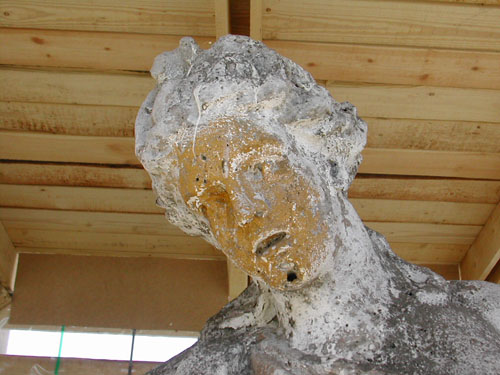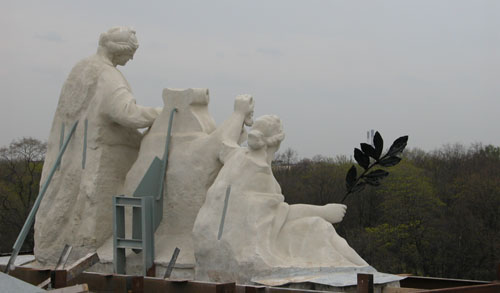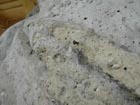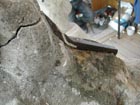Sculptural composition "The Virtue"
Sculptor I.P.Prokofiev, XVIII century.
Restoration

In 2001-2002 “Center of restoration of ecology and culture” carried out the restoration and conservative works at the attic of Betzkoy house building under auspices of restorer Stanislav Shchigorets. Systematic supervision was carried out by specialist from All-Russian Research Institute of museum values restoration. Biological investigations were carried out under auspices of Dmitriy Vlasov, assistant professor, Cand. Sc. {Biology} of the Biological Institute of Saint-Petersburg State University. Restoration works were carried out by experienced restorers and sculptors.
The state of monument:
The stony sculpture surface is subject to severe exposure of atmospheric downfall in conditions of industrial city, different pollution under the influence of physical and chemical agents. The monument position near Neva embankment, a traffic artery, and also wind rose have an effect on the damage level and safety of the monument. Statuary “The Virtues” (supposedly its author is I. P. Prokofiev), is made from freshwater limestone, and consists of two feminine figures and a shield between them. Statuary length by the building front is 4.2 m. Height of right (looking at the building front) feminine figure above the pedestal is 2.2 m; height of the shield is 1.7 m. Each part of statuary consists of two monoliths, put one on another. In the central part of statuary between figures there is a cartouche. Right figure doesn’t have a part of arm with hand and a significant part of garland. Left figure also has damages at the hand. There are a lot of small losses on the sculpture head, the plastique is lost practically, there is a cement insertion at the neck, the whole surface is covered by shells, cleavages, holes and corrugations. Raised right hand, holding palm-branch, lost its plastique and metal branch itself. There are prints of yellow paint on the face of sitting figure. There are losses of stone and white downflows on the figure head, breast, legs and drapery. All these facts result into violation o f integrity of the piece of work artistic perception. The sculpture surface contaminations divide by the contamination levels and by their manner of production into the following types: General contamination at the open areas of the sculpture from the direct influence of atmosphere in conditions of industrial city under the influence of physical and chemical agents. This type of contamination is characterized by the presence of a thin layer of grime and dust, and also a thin layer of gypsum parings. Researches. Researches were carried out in chemical-biological laboratory of the Russian Museum and in Saint-Petersburg State University, Biological Research Institute. Laboratory research of completing masses has shown that white paint layer, covering stone in all researched samples is presented by white zinc paint admixed with lead paint. Microbiological study: The monument has high order destruction. Microbial cenosis is presented by microfungus (26 types), sea grass, bacteria and lichens..
f integrity of the piece of work artistic perception. The sculpture surface contaminations divide by the contamination levels and by their manner of production into the following types: General contamination at the open areas of the sculpture from the direct influence of atmosphere in conditions of industrial city under the influence of physical and chemical agents. This type of contamination is characterized by the presence of a thin layer of grime and dust, and also a thin layer of gypsum parings. Researches. Researches were carried out in chemical-biological laboratory of the Russian Museum and in Saint-Petersburg State University, Biological Research Institute. Laboratory research of completing masses has shown that white paint layer, covering stone in all researched samples is presented by white zinc paint admixed with lead paint. Microbiological study: The monument has high order destruction. Microbial cenosis is presented by microfungus (26 types), sea grass, bacteria and lichens..


